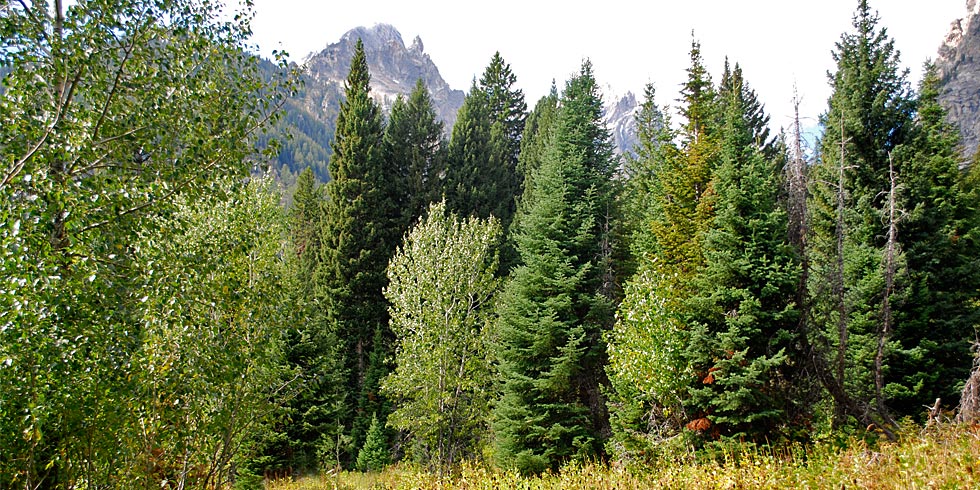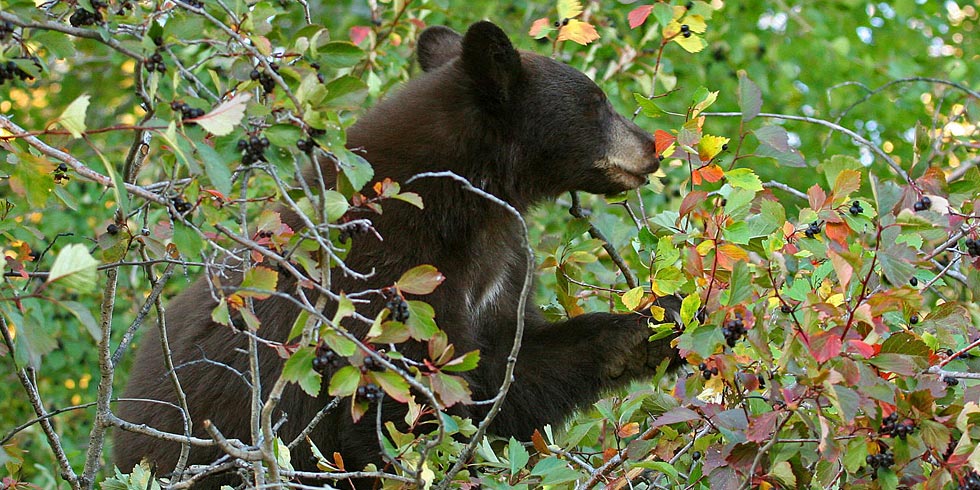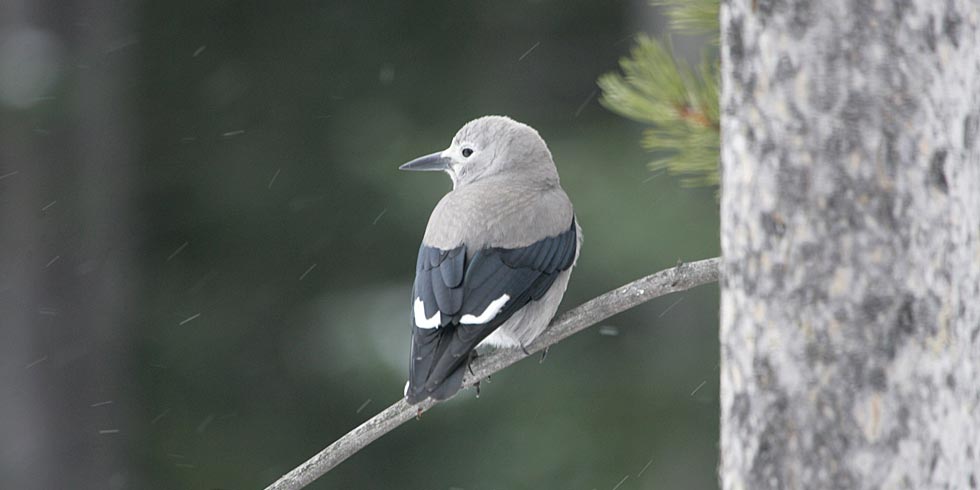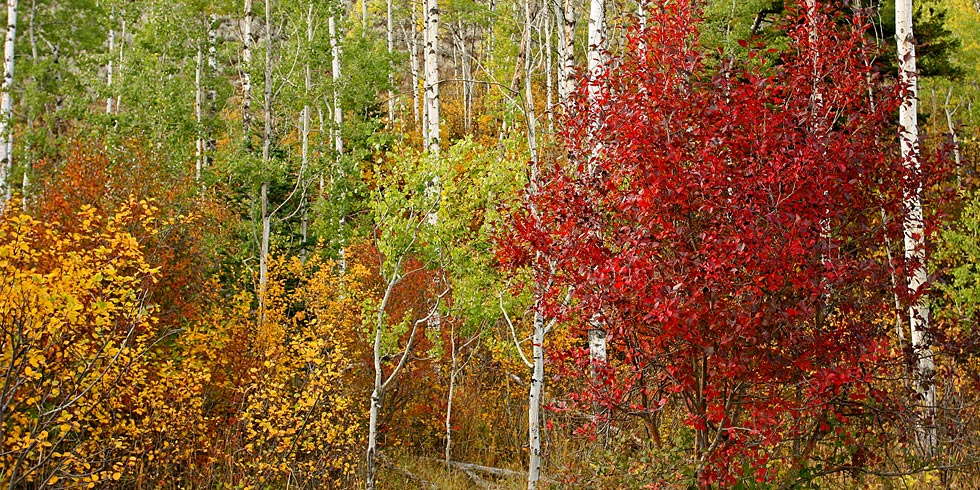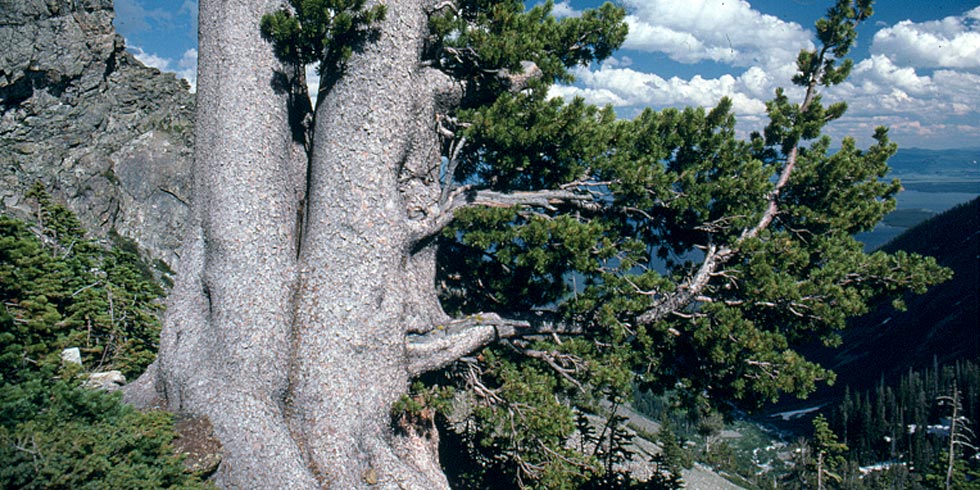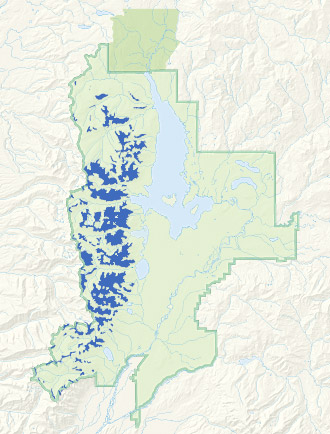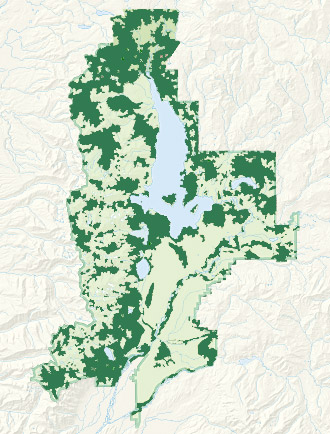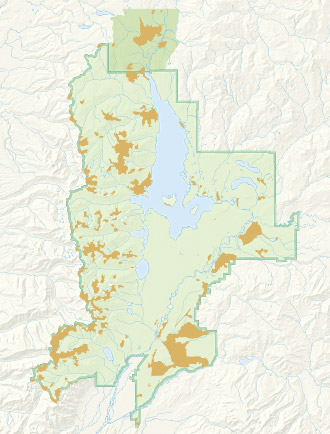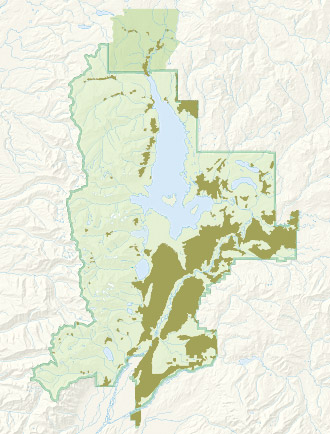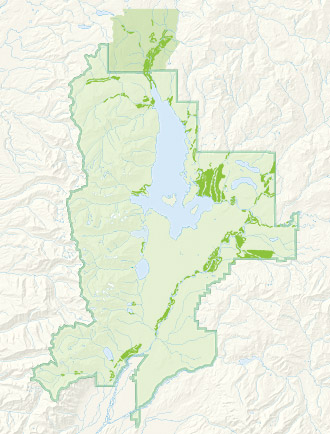Forest Community
Overview
Trees are the pillars of the forest community. They provide habitat for wildlife, produce oxygen, stabilize soils and prevent erosion of riverbanks. Geology and climate determine the type and location of forests. Glacier-created moraines retain moisture, allowing the growth of lodgepole pine adjacent to areas of shallow porous soils that lack trees. Trees are absent above treeline in the mountains.
Forest Community
Plants
Over 1,000 species of vascular plants grow in Grand Teton National Park and the surrounding area. Soil conditions, availability of moisture, slope, aspect, and elevation all determine where plants grow. Plants that require similar conditions are often found growing in the same area. Animals depend on plants within a community for food and shelter. The plants in an area often determine the animals that occur in that area. These associations form various wild communities.
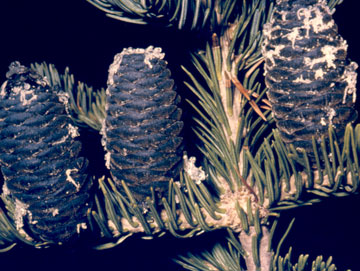 |
Subalpine Fir
Abies lasiocarpaSubalpine firs can be distinguished from other conifer trees by their dark green color, dense crown and slender spire-like shape. This shape allows the tree to shed heavy snowfall without damage.
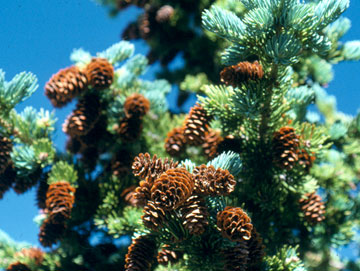 |
Engelmann Spruce
Picea engelmanniiEngelmann and blue spruce are both found in the park. While the blue spruce is generally restricted to river and creek bottoms, Englemann spruce ranges from valley lakeshores up to tree line in the mountains.
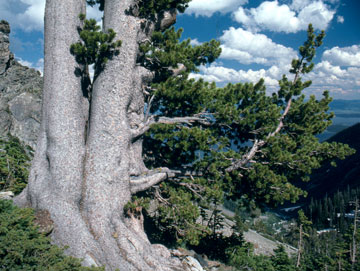 |
Whitebark Pine
Pinus albicaulisWhitebark pine grows at elevations above 8,000 feet in the park. Whitebark pine seeds are important for grizzly bear survival, but climate change, a native beetle and an introduced fungus threaten this species.
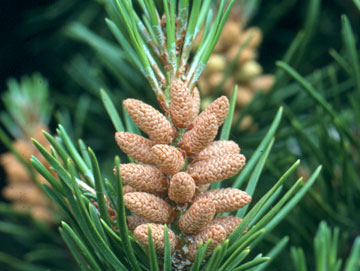 |
Lodgepole Pine
Pinus contortaLodgepole pine forms fire dependent climax forests. Without fire, subalpine fir and Englemann spruce would replace lodgepole pines. These pines have developed adaptations for fire allowing them to flourish.
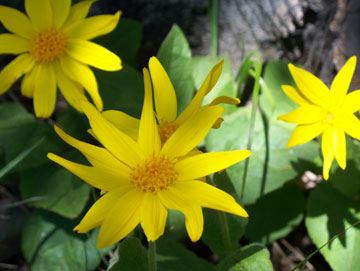 |
Heartleaf Arnica
Arnica cordifoliaHeartleaf arnica is a sunflower, but is much shorter than the common sunflower, only 4-24 inches tall. It often forms the dominant understory plant in forests reminding one of a dwarf field of common sunflowers.
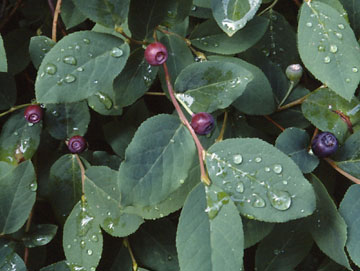 |
Highbush Huckleberry
Vaccinium membranaceumThe dark purple berries of the park’s highbush huckleberry are a favorite food of bears, chipmunks, mice, birds and visitors who relish this tasty berry in summer. Harvest a few, but leave most for wildlife.
Forest Community
Mammals
With varied elevations and a variety of wild communities, Grand Teton National Park is home to over 60 species of mammals. Large ungulates like moose, elk, mule deer, bison, and pronghorn are commonly seen along park roads. Although less common, large predatory mammals such as grizzly bears, black bears and coyotes are also regularly seen, while wolves and mountain lions are more elusive. Smaller mammals are abundant in the park, and species such as Uinta and golden-mantled ground squirrels, least chipmunks, red squirrels and pikas are commonly seen. Look for muskrats, beavers, or river otters in wetland communities. Bats frequently cruise above waterways for insects. Every wild community has its own assemblage of mammalian species.
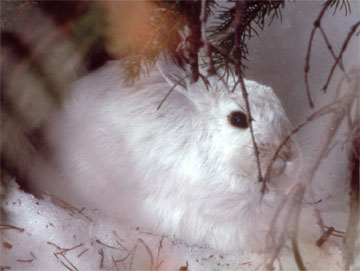 |
Snowshoe Hare
Lepus americanusExcept for its black ear tips, the white fur of the snowshoe hare dissolves into white of winter’s snow. In summer, the hare’s fur turns a deep brown that blends into the forest’s dark shadows.
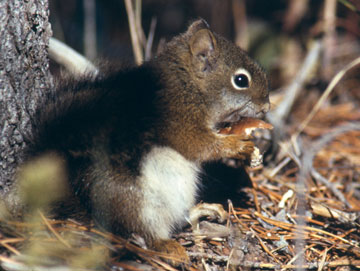 |
Red Squirrel
Tamasciurus hudsonicusThe chatter of the red squirrel is a common sound of autumn in the coniferous forests of the park. This territorial call challenges intruders intent on robbing the squirrel of its winter supply of stored cones.
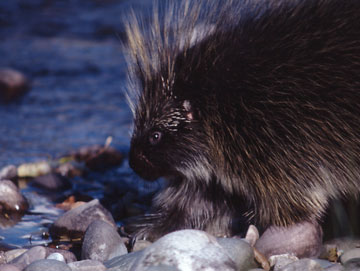 |
Porcupine
Erethizon dorsatumPorcupines are nocturnal, so bark absent on the trunk and higher limbs of many trees may be the only indicator of their presence. The characteristic barbed quills that protect this animal are modified hairs.
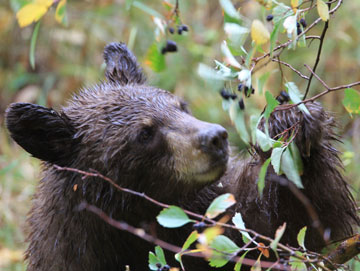 |
Black Bear
Ursus americanusBlack bears in the park come in various colors. They may be black, but more often are a shade of brown ranging from dark chocolate to cinnamon brown and even straw colored. Look for them in the forest community.
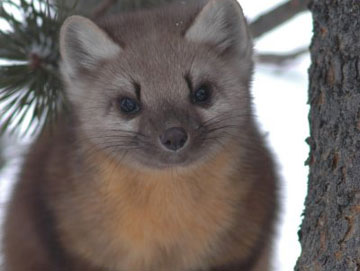 |
American Marten
Martes americanaMartens are cat-sized members of the weasel family. They have long bodies, brown fur and a somewhat bushy tail. Look for them hunting for rodents on the ground or searching for bird eggs or young in trees. (Photo credit: Wild Sage Photography, Joel Lachowski)
Forest Community
Birds
Birds in Grand Teton National Park are varied and abundant with over 300 species having been observed in the park. Birds are most abundant during the spring and fall migration, although over 60 species regularly breed in the park. For the avid bird watcher the park can be a good place to observe a number of Rocky Mountain and Western species including the trumpeter swan, cinnamon teal, Barrow’s goldeneye, Swainson’s hawk, greater sage grouse, dusky (blue) grouse, great gray owl, broad-tailed and calliope hummingbirds, violet-green swallow, Steller’s jay, black-billed magpie, Clark’s nutcracker, mountain chickadee, dipper, mountain bluebird, yellow-headed blackbird, western tanager and rosy finch. Other commonly seen birds in the park include common merganser, bald eagle, osprey, sandhill crane, common raven, yellow and yellow-rumped warbler.
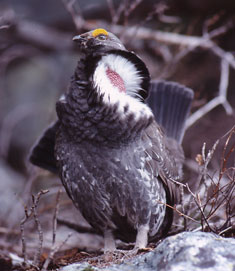 |
Dusky Grouse
Dendragapus obscurusOnce known as the blue grouse, the dusky grouse is a chicken-like bird of the forest. During courtship the male fans its tail, inflates air sacks on its throat and erects the reddish wattles above its eyes.
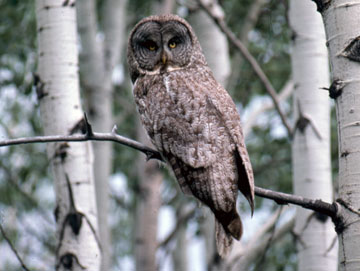 |
Great Gray Owl
Strix nebulosaThe great gray owl is a large forest owl. It has a large head, round face, eyes that face forward, but it lacks “horns”. Unlike most owls, it is active during the day, preying on mice and voles from a perch.
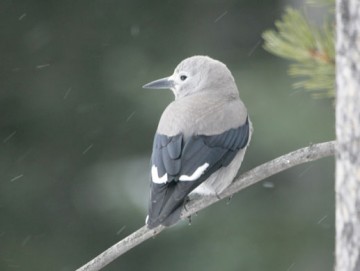 |
Clark's Nutcracker
Nucifraga columbianaClark’s nutcracker feeds almost exclusively on the seeds of whitebark pines, harvesting and caching thousands of seeds each fall on windswept ridges. The few seeds not retrieved may sprout into seedlings.
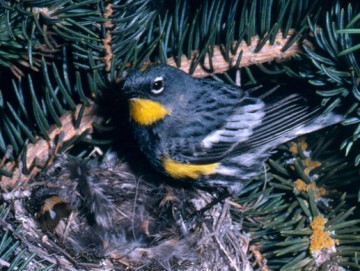 |
Yellow-rumped Warbler
Dendroica coronataThe yellow-rumped warbler is a common warbler of the conifer forest. Its striking plumage has patterns of blue-gray, black and white. Patches of bright yellow highlight the body, in particular the rump.
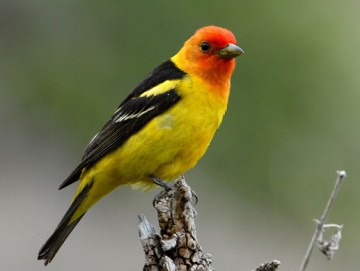 |
Western Tanager
Piranga ludovicianaThe western tanager looks like it should be in a tropical forest rather than the park’s forests. The male is yellow with a black back and red head. The female lacks the red head and has a greenish-yellow back. (Photo Credit: USFWS)
Forest Community
Invertebrates
Insects and other invertebrates are some of the most abundant and most important animal groups in the park. There are over 10,000 species of invertebrates in the park. These animals play important roles in wild communities - insects function as pollinators of the park’s abundant wildflowers, while insects and other invertebrates, are food for mammals and birds from the largest grizzly bear to the smallest warbler. Invertebrates act as critical decomposers and nutrient-recyclers and cause important plant diseases.
 |
Mountain Pine Beetle
Dendroctonus ponderosaeThe mountain pine beetle attacks and kills lodgepole, whitebark and limber pines. Yellow dots of resin on the trunk or incised galleries under the bark indicate an attack. Later the needles die and turn red.
Discover Grand Teton is funded by the Grand Teton National Park Foundation in partnership with the National Park Service.
gtnpf.org
gtnpf.org
